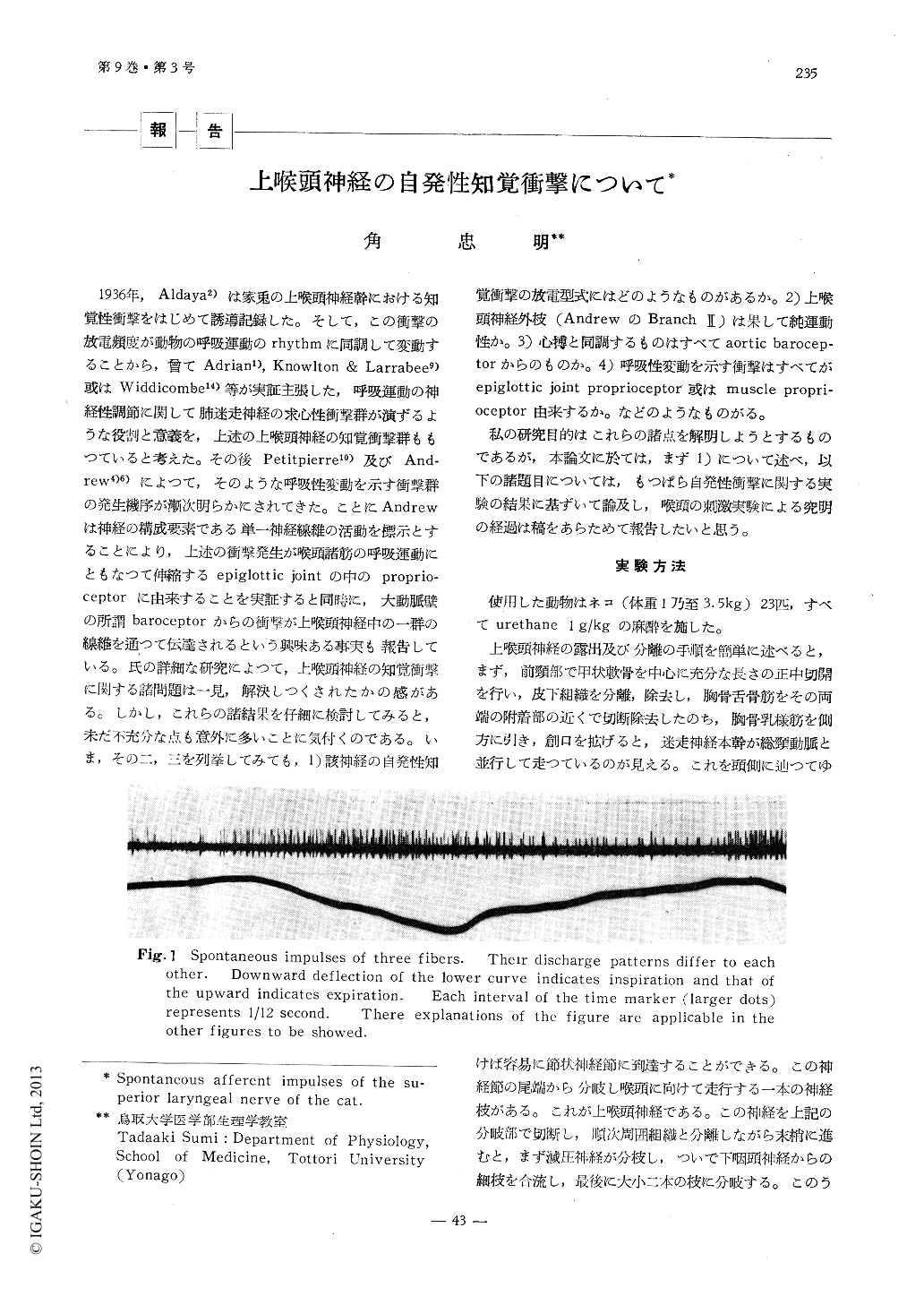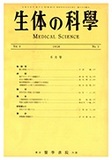Japanese
English
- 有料閲覧
- Abstract 文献概要
- 1ページ目 Look Inside
1936年,Aldaya2)は家兎の上喉頭神経幹における知覚性衝撃をはじめて誘導記録した。そして,この衝撃の放電頻度が動物の呼吸運動のrhythmに同調して変動することから,曾てAdrian1),Knowlton & Larrabee9)或はWiddicombe14)等が実証主張した,呼吸運動の神経性調節に関して肺迷走神経の求心性衝撃群が演ずるような役割と意義を,上述の上喉頭神経の知覚衝撃群ももつていると考えた。その後Petitpierre10)及びAndrew4)6)によつて,そのような呼吸性変動を示す衝撃群の発生機序が漸次明らかにされてきた。ことにAndrewは神経の構成要素である単一神経線維の活動を標示とすることにより,上述の衝撃発生が喉頭諸筋の呼吸運動にともなつて伸縮するepiglottic jointの中のproprioceptorに由来することを実証すると同時に,大動脈壁の所謂baroceptorからの衝撃が上喉頭神経中の一群の線維を通つて伝達されるという興味ある事実も報告している。氏の詳細な研究によつて,上喉頭神経の知覚衝撃に関する諸問題は一見,解決しつくされたかの感がある。しかし,これらの諸結果を仔細に検討してみると,未だ不充分な点も意外に多いことに気付くのである。いま,その二,三を列挙してみても,1)該神経の自発性知覚衝撃の放電型式にはどのようなものがあるか。
Spontaneous afferent impulses of single superior laryngeal nerve fibers were recorded oscillographically on 23 cats. The results of this experiment were summarized just as follows :
1. Unitary afferent impulses of ramus internus of this nerve have each peculiar pattern, and are divided into two groups whether the periodical change of their discharge frequency has been coincided with the respiratory rhythm or not. Among all fibers examined, the former type of discharge pattern is recognized in most cases.

Copyright © 1958, THE ICHIRO KANEHARA FOUNDATION. All rights reserved.


